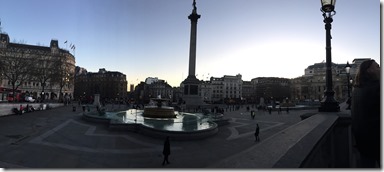Back in 2007, there was a trend of videos on YouTube called “What Impact Has Harry Potter Had on Your Life” that inspired responses from many others whose lives had been changed drastically by those seven books about a boy wizard.
You might be wondering what this has to do with activism, or feminism, self-love, any of the other topics I normally write about—but stick with me, I have a point.
Last weekend a close friend of mine and I went to the Warner Bros Harry Potter Studio Tour. It was amazing. It was—magical. Totally worth all the money I dropped on wands and notebooks in the gift shop.
Harry Potter meant a lot to 4th grader me. 4th grader me who felt like weirdo kid who had trouble making new friends, who didn’t know what to do with her messy hair, who hated her body—even back then. So I really related to Harry Potter, who also didn’t seem to fit in at school before he rescued by his Hogwarts letter. Harry Potter taught me that there could be a better world out there if you look for it.
Although the world I found in activism isn’t a magical in the sense that there’s spells and wands (well, you bet I own a Hermione Granger wand) but it’s magical in a different way in the sense that I’ve found a little family within the social justice community.
But back when I was 10, 12, 15, etc. I needed the magical world of Harry Potter. Harry Potter was introduced to me by my childhood best friend. It connected me to a YouTube community like Five Awesome Girls and Vlogbrothers which helped me survive my middle school years. Watching cool people doing charity work and talking about books online shaped who I wanted to become as an adult. I wouldn’t be who I am at twenty without Harry Potter—that is not an exaggeration.
I went to book releases, movie premieres, and sought out bookstores with Harry Potter merchandise. The series made me feel proud to be a nerdy little kid who likes books and being good at school. Watching Hermione Granger—a main female character that doesn’t fall into a trope meant a lot to me. Her big, bushy hair, lack of hatred for her body, and the fact that her entire existence wasn’t devoted to looking for a boyfriend refuted all the other messages I was getting from problematic media.
Also the fact that JK Rowling belongs to an exclusive club of successful female authors whose work is known for something “other category” I’ve wanted to become a writer ever since.
I disconnected with the HP fandom when I was sixteen and the person who bought me my first three books in the series stopped being part of my life under very sad circumstances. The Harry Potter world brought me pain after that—I wish it didn’t, but it did.
With time, I got back into it. I re-watched all the movies when I was happy and when I was sad. I listened to the books on tape whenever I couldn’t sleep.
That’s why doing on the WB tour and exploring places in Oxford and exploring places where the movies were filmed was so important to me.
That’s why I’m also grateful for the current community that I’ve found now within the activist community. I think there’s a reason why a lot of YouTubers I used to watch that make videos about Harry Potter now make videos about feminism and social justice initiatives. We were all looking for a magical, better world back then to escape from the hard parts with HP—and now we’re trying to create a magical, more welcoming world.
*I thought I’d kick of National Eating Disorders Awareness Week with a light post about Harry Potter and social justice but be on the look out for more posts this coming week!
Thanks for everything HP.
Christina
